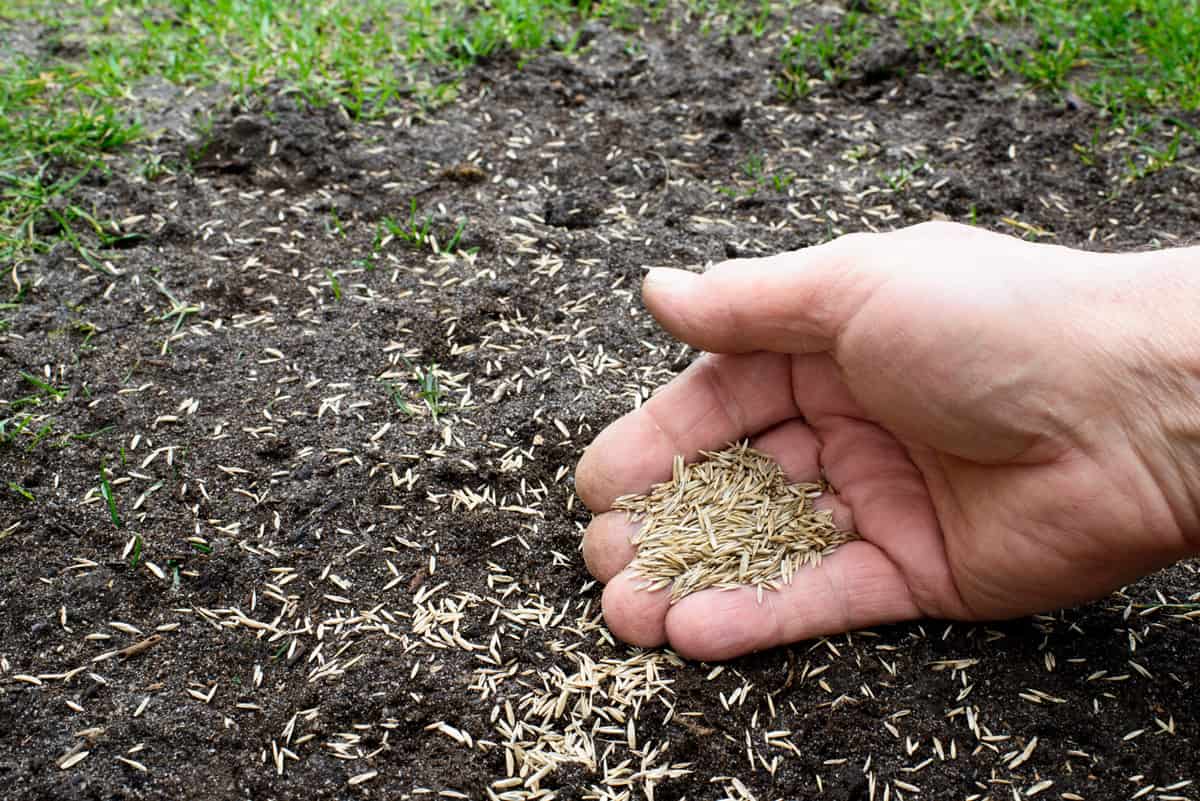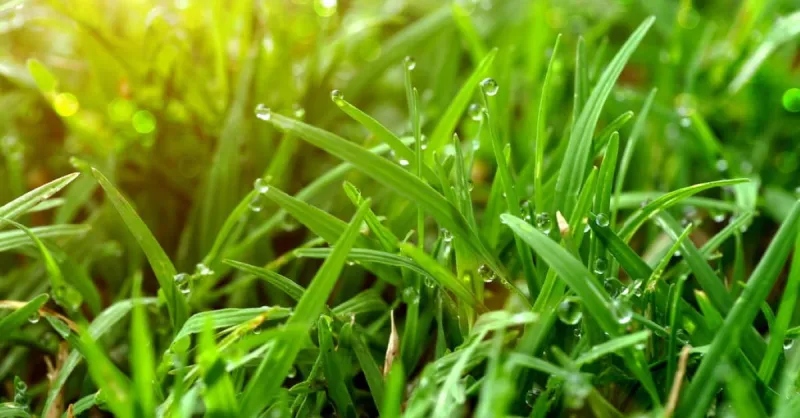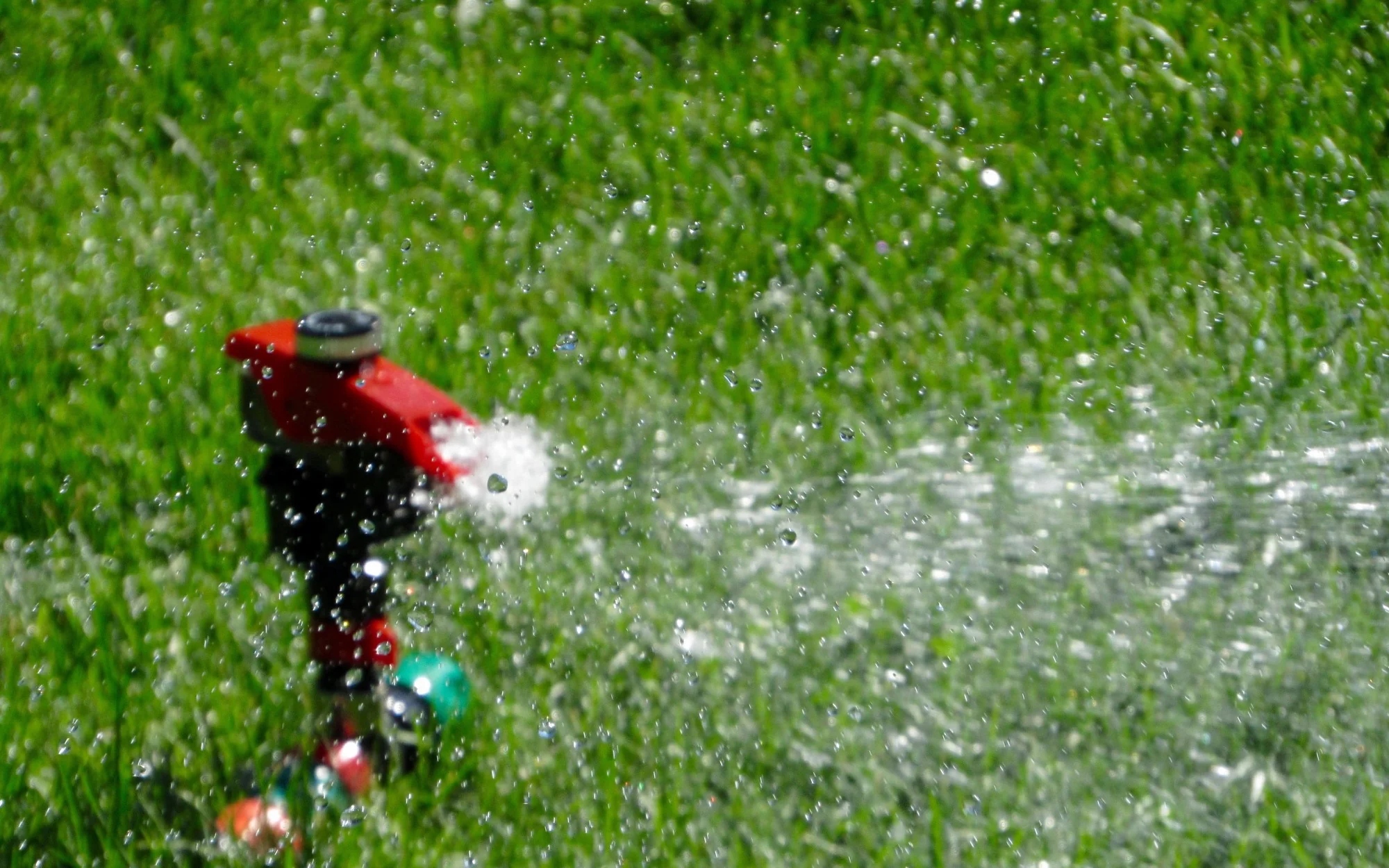How Often Do You Need To Water Grass Seed? - A Guide To Grass Seed Hydration
How often do you need to water grass seed? Unlock lush lawns with precise grass seed watering. Learn when and how often to water for vibrant, healthy growth.
Author:James PierceReviewer:Paolo ReynaJan 31, 2024165 Shares23.5K Views

Establishing a lush and healthy lawn begins with proper care and attention to the crucial stage of grass seed germination. Watering is a key factor in this process, and understanding how often to water grass seed is essential for fostering optimal growth. So, how often do you need to water grass seed?
Watering your newly seeded grass requires more than just putting a lot of water on it every now and then. Too much or too little water are both undesirable situations for your lawn's growth. Overwatering might destroy seeds that have not yet taken root. Too little water will cause the little shoots to dry out and die.
Watering frequency and volume are determined by a variety of parameters, including grass type, soil conditions, climate, and seed germination stage.
Proper watering ensures that the grass seed receives enough moisture to germinate and grow into a healthy, vibrant lawn.
So, how often do you need to water grass seed? Let us find out.
In this comprehensive guide, we'll delve into the factors influencing the watering frequency, the signs of overwatering or underwatering, and practical tips to ensure successful grass seed establishment.
How Much To Water New Grass Seed?
Shade and intense sunlight make it difficult to establish a single watering volume required for an entire area on any given day. Consider how the requirements for watering new grass seed can be changed in each of the following situations:
Normally, a lawn should be watered deeply but seldom, but when planting new grass seed, water every day. Set automated timers for 5 to 10 minutes early in the morning and again around midday.
Watering by hand or with hose-end sprinklers must be consistent and evenly distributed. It should offer roughly the same quantity of moisture throughout, perhaps less in shady spots. Watering should be done twice a day until the new grass grows in, then once a day for another week. Adjust this routine to meet the demands of the season and the temperature.
If you have a large lawn or many locations, follow the same steps as above. If hand watering is practicable for smaller amounts or regions, leave the grass on its normal irrigation schedule for a single cycle per day and supplement the barren spots once or twice daily, or as needed, to keep the new seeds moist.
When new lawn preparation is done properly, the soil is tilled to loosen it for the new grass plants to grow in. This loose soil is prone to holding a lot of water. Remember, do not overwater! Some soil types become spongy, and walking on them causes severe depressions and compaction.
Trying to fix a yard full of deep imprints is not a project you want to take on! The top inch of soil should be moist at all times. This could take 2-6 minutes or longer, depending on your sprinkler system and soil type.
Use your best judgment, but moist but not soggy is the goal! Repeat this practice twice or even three times each day (depending on the weather); watering new grass seed in new lawn areas does not necessitate long watering periods. This merely sends the water deeper than is necessary at this early stage.
Tips For The Best Results
- Cover the new grass seed with mulch before you water it for the first time.
- When planting, avoid the hottest season and infrequent heat spells. Watering young grass seed is difficult enough without having to contend with the heat. If you have no alternative, be cautious and accept the need to apply water more regularly because it dries up faster.
- If you notice moss or algae-like growths, especially in gloomy locations, there is too much moisture present. Reduce the frequency and duration of watering.
- For tiny patch projects, some seed brands come with a moisture-retaining coating. This strategy is effective, but it may be prohibitively expensive over big areas.
- Don't get a cheap lawn sprinkler. They do not evenly distribute the water and frequently leak, resulting in puddles. You receive what you pay for: Companies that research and test their products for effective coverage must charge more.
- (How much do you spend on seed, mulch, and other materials? Not to mention your time and effort. Purchase an excellent sprinkler and use it as a great tool!)
- Oscillating sprinklers are ideal for watering young grass seed in broad areas when runoff is an issue. The back-and-forth motion provides for more soaking time than a steady spray on all regions.
Factors Influencing Watering Frequency For Grass Seed
Establishing a healthy lawn begins with understanding the factors that influence the watering frequency for grass seed. Proper watering is essential during the germination stage and throughout the early growth phases. Here are key factors to consider when determining how often you should water grass seed:
Type Of Grass Seed
Different grass species have varying water requirements. Cool-season grasses, such as Kentucky bluegrass and fescue, often demand more frequent watering than warm-season varieties like Bermuda grass. It's crucial to tailor your watering schedule based on the specific needs of the grass seed you've planted.
Soil Type
The composition of your soil significantly impacts water retention. Sandy soils drain quickly, requiring more frequent watering, while clayey soils retain moisture for longer periods. Understanding your soil type allows you to adjust the watering frequency to match its characteristics, promoting optimal water utilization.
Weather Conditions
Weather fluctuations play a crucial role in determining how often you should water grass seed. Hot and dry conditions increase the demand for water, requiring more frequent irrigation. In contrast, cooler temperatures or periods of rain may reduce the need for watering. Monitoring weather forecasts allows you to make timely adjustments to your watering routine.
Stage Of Germination
The germination stage is a critical period for grass seed. During this phase, consistent moisture is essential for successful sprouting and root development. Initially, grass seed requires frequent, light watering to keep the soil consistently moist. As the seedlings emerge, you can gradually transition to less frequent, deeper watering to encourage robust root growth.
Time Of Day
The timing of watering can impact its effectiveness. Watering in the morning is generally recommended, as it allows the grass to absorb moisture before the heat of the day. Morning watering reduces the risk of evaporation, ensuring that the grass receives the maximum benefit from each irrigation session.
Understanding and adapting to these factors is crucial in establishing an effective watering routine for your grass seed. Now, let's explore the signs that indicate you might be overwatering, a common pitfall in lawn care.
Signs Of Overwatering Grass Seed
While water is essential for grass seed growth, overwatering can lead to various issues. Recognizing the signs of overwatering is crucial for maintaining a healthy lawn. Here are common indicators that you may be providing too much water:
Pooling Water
Excessive watering can result in standing water or puddles in your lawn. If you notice water pooling after irrigation, it's a clear sign that the soil has reached its saturation point. This can lead to waterlogged conditions, depriving the grassroots of essential oxygen.
Fungus And Mold Growth
Overwatering creates a favorable environment for fungus and mold. If you observe the development of mold or a slimy film on the soil surface, it's an indication that the grass is receiving more water than it can effectively utilize. This can lead to diseases that harm the grass seedlings.
Yellowing Grass
Surprisingly, overwatering can result in yellowing grass. When the soil is consistently waterlogged, the grassroots struggle to access sufficient oxygen, leading to a condition known as root suffocation. Yellowing is a sign of stress caused by a lack of proper aeration.
Weakened Grass
Excessive water can weaken the grass, making it more susceptible to diseases and pests. A weakened lawn is less resilient and may struggle to establish a robust root system. Overwatering compromises the overall health of the grass, leaving it more vulnerable to external threats.
Soil Compaction
Over time, consistent overwatering can contribute to soil compaction. Waterlogged soil becomes denser, hindering the movement of air and nutrients to the roots. This compaction limits the grass's ability to establish a healthy and expansive root system.
Reduced Oxygen Levels
Roots require oxygen for proper growth and function. Overwatering displaces air in the soil, reducing oxygen levels available to the roots. As a result, the grass may exhibit signs of stress, including wilting and a general decline in vigor.
Algae Growth
Excessive moisture on the soil surface can lead to the growth of algae. If you observe a green film or slimy substance on the soil, it's an indication that conditions are conducive to algae development. This can further disrupt the natural balance of the lawn ecosystem.
Increased Pest Activity
Overwatering attracts pests that thrive in damp conditions. These pests, such as fungi, insects, or rodents, can damage the grass and compromise its overall health. Monitoring pest activity is essential to identifying potential overwatering issues.
Stunted Growth
Contrary to the expectation of promoting growth, overwatering can lead to stunted growth. When the soil is constantly saturated, the grass may struggle to access nutrients and establish a robust root system, resulting in a lack of upward growth.
Increased Weed Presence
Overwatered lawns are more prone to weed infestations. Weeds, particularly those that thrive in damp conditions, can quickly take advantage of the excess moisture. Monitoring weed presence is a key indicator of the overall health of your lawn.
Recognizing these signs of overwatering is essential for adjusting your watering routine and promoting a healthier lawn. Striking the right balance in watering frequency is a key aspect of successful grass seed establishment and long-term lawn care.
Signs Of Underwatering Grass Seed
In the quest for a healthy lawn, understanding the signs of underwatering is as crucial as recognizing signs of overwatering. Inadequate water supply can hinder the germination and growth of grass seed, leading to sparse, weak, or uneven grass coverage. Here, we'll explore the signs that indicate your grass seed may not be receiving enough water:
Slow Germination
If your grass seed is slow to germinate, it could be a sign of inadequate watering. Germination requires consistent moisture, and an insufficient water supply may delay or even prevent the emergence of grass seedlings.
Wilting Grass
Underwatered grass will exhibit signs of wilting. The grass blades may appear limp and lack the usual upright turgor pressure. This is a clear indicator that the grass is not receiving enough water to support its growth.
Sparse Growth
A lack of water can result in sparse and uneven grass growth. If you notice areas of the lawn with stunted or thin grass, it may be a sign that those areas are not receiving sufficient moisture to foster robust seedling development.
Dry Soil
Checking the soil is a direct way to assess whether the grass is receiving enough water. If the soil feels dry to the touch, particularly in the top inch, it indicates insufficient moisture for the grass seed to thrive. Dry soil can hinder root establishment and overall grass development.
Faded Color
Underwatered grass may exhibit a faded or dull color compared to well-hydrated grass. The lack of water affects the grass's ability to maintain a vibrant green hue, signaling stress and potential long-term damage if the water deficit persists.
Crunchy Texture
Walking on the lawn and feeling a crunchy or dry texture underfoot can be a sign of insufficient water. Healthy grass should feel soft and resilient. The crunchy texture indicates that the grass is not receiving the hydration needed to maintain optimal health.
Shallow Roots
Inadequate water can lead to the development of shallow roots. Grass with shallow roots is more susceptible to environmental stressors and less capable of accessing nutrients deeper in the soil. Deep and well-established roots are crucial for a healthy and resilient lawn.
Increased Susceptibility To Pests
Underwatered lawns are more vulnerable to pest infestations. Stressed grass becomes an attractive target for pests such as insects and rodents. Monitoring for signs of increased pest activity is an important clue that the grass may not be receiving sufficient water.
Early Senescence
Underwatered grass may show signs of premature aging or senescence. This includes the browning and drying out of grass blades before reaching their full growth potential. Early senescence indicates stress and reduced vitality in the grass.
Difficulty In Resilience
Well-hydrated grass exhibits resilience when subjected to stress, such as foot traffic or mowing. Underwatered grass lacks this resilience and may struggle to recover after stress events, leading to compounding issues in lawn health.
Recognizing these signs of underwatering is crucial for adjusting your lawn care routine and ensuring the successful establishment of grass seed. Now, let's explore the importance of establishing a proper watering routine to foster the growth of a vibrant and healthy lawn.
Establishing A Watering Routine For Grass Seed
Establishing a proper watering routine is a fundamental aspect of nurturing healthy grass seed growth. A well-thought-out watering plan ensures that your lawn receives the moisture it needs at the right times, promoting strong root development and lush grass coverage. Here's a comprehensive guide to establishing an effective watering routine for your grass seed:
Initial Watering
Begin by providing thorough watering immediately after seeding. This ensures that the soil is adequately moist for the germination process to commence. Use a fine mist or a gentle spray to avoid displacing the seeds.
Frequent, Light Watering (Germination Stage)
During the germination stage, grass seed requires frequent, light watering to keep the soil consistently moist. This may involve watering multiple times per day, particularly in warmer conditions. Aim to keep the top inch of soil consistently damp to support seedling development.
Transition To Deep Watering
As grass seedlings emerge and develop, gradually transition from frequent, light watering to less frequent, deeper watering. Deep watering encourages the development of a robust root system as the grass seeks moisture deeper within the soil.
Adjust Based On Conditions
Continuously monitor weather conditions, including temperature and precipitation. Adjust your watering routine accordingly to accommodate changing environmental factors. During hot and dry periods, you may need to increase watering frequency, while cooler or rainy weather may require less frequent watering.
Morning Watering
Whenever possible, water the lawn in the morning. Morning watering allows the grass to absorb moisture before the heat of the day, reducing the risk of evaporation. This timing promotes optimal water utilization and helps prevent the onset of fungal issues associated with prolonged moisture on the grass.
Measure Soil Moisture
Use a soil moisture meter or conduct simple soil checks to gauge moisture levels. This allows you to make informed decisions about when to water and when to allow the soil to dry slightly between watering sessions. Maintaining an optimal balance of moisture is essential for grass seed health.
Avoid Waterlogging
While consistent moisture is crucial, avoid waterlogging the soil. Overly saturated soil can lead to oxygen deprivation for the roots, hindering their growth. Ensure that water penetrates the soil effectively without creating puddles or standing water.
Gradual Reduction In Watering Frequency
As the grass matures, gradually reduce the frequency of watering. This encourages the development of a self-sustaining lawn that can tolerate slightly drier conditions. However, continue to monitor soil moisture to prevent dehydration.
Consideration Of Grass Type
Take into account the specific water requirements of the grass type you've planted. Different grass species have varying needs, and tailoring your watering routine to match these requirements is essential for optimal growth.
Mulching For Moisture Retention
Applying a layer of mulch around the grass seed can help retain moisture in the soil. Mulching reduces evaporation, suppresses weed growth, and provides insulation against temperature extremes, creating a more favorable environment for grass seed germination and growth.
How Often Do You Need To Water Grass Seed? - FAQs
Is It Necessary To Adjust The Watering Frequency Based On The Type Of Grass Seed?
Yes, different grass species have varying water requirements, so adjusting the watering frequency based on the type of grass seed is essential for successful growth.
What Signs Indicate That Grass Seed Is Being Overwatered?
Signs of overwatering include pooling water, fungus growth, yellowing grass, and a weakened lawn susceptible to diseases and pests.
How Does Weather Conditions Impact The Watering Needs Of Grass Seed?
Hot and dry conditions may require more frequent watering, while cooler temperatures or rain may reduce the need for watering.
How Can I Transition From Frequent To Less Frequent Watering As Grass Seedlings Mature?
Gradually transition from frequent, light watering to less frequent, deep watering as grass seedlings emerge and develop, promoting a robust root system.
Conclusion
Establishing a healthy lawn through grass seed requires a meticulous approach to watering. So, how often do you need to water grass seed? By considering the type of grass seed, soil characteristics, weather conditions, and the germination stage, you can tailor a watering routine that fosters optimal growth.
Pay attention to signs of overwatering and underwatering, adjusting your approach as needed to ensure a lush and vibrant lawn. Remember that the key is not just the frequency of watering but the ability to strike the right balance for the specific needs of your grass seed and local environmental conditions.

James Pierce
Author

Paolo Reyna
Reviewer
Latest Articles
Popular Articles

